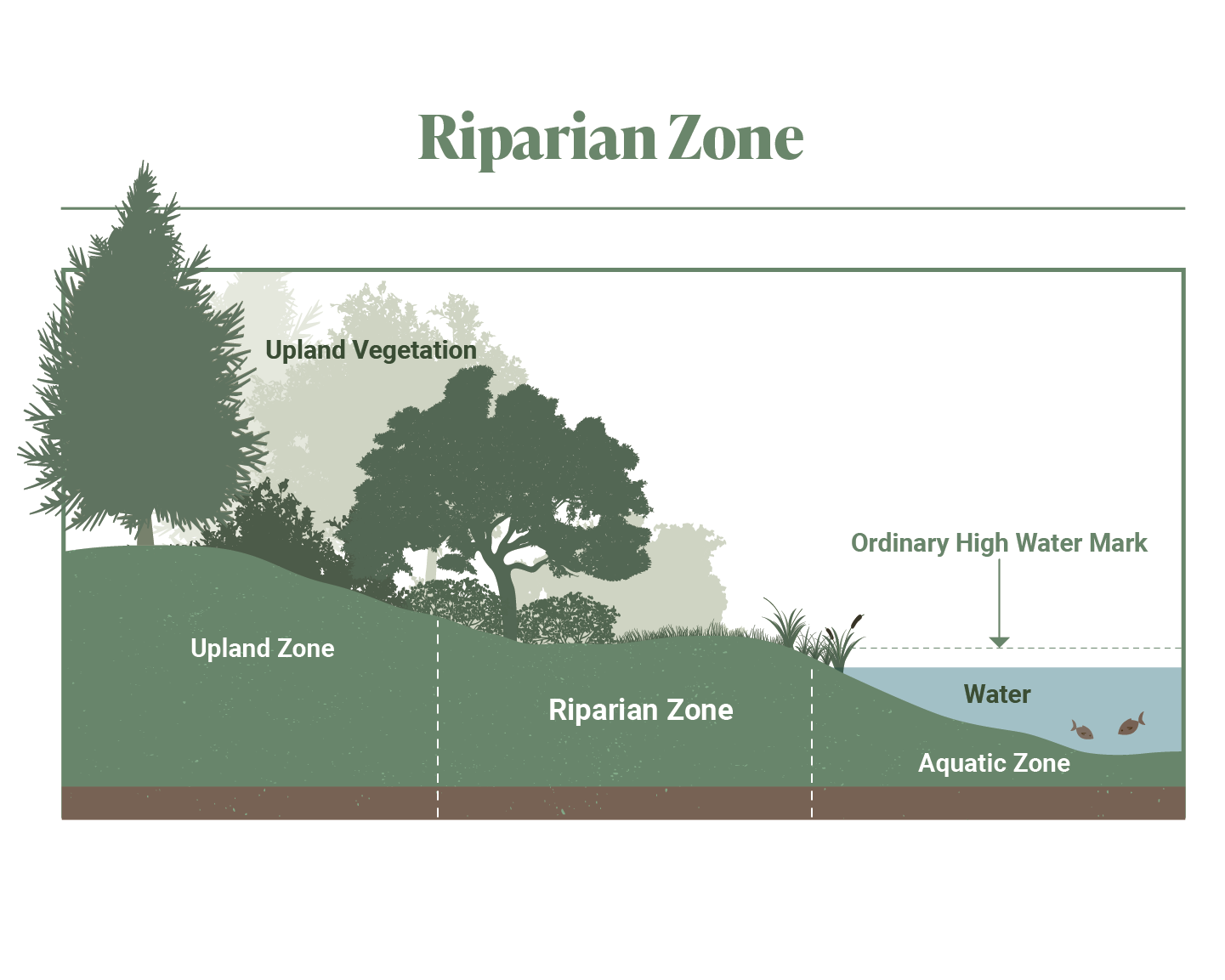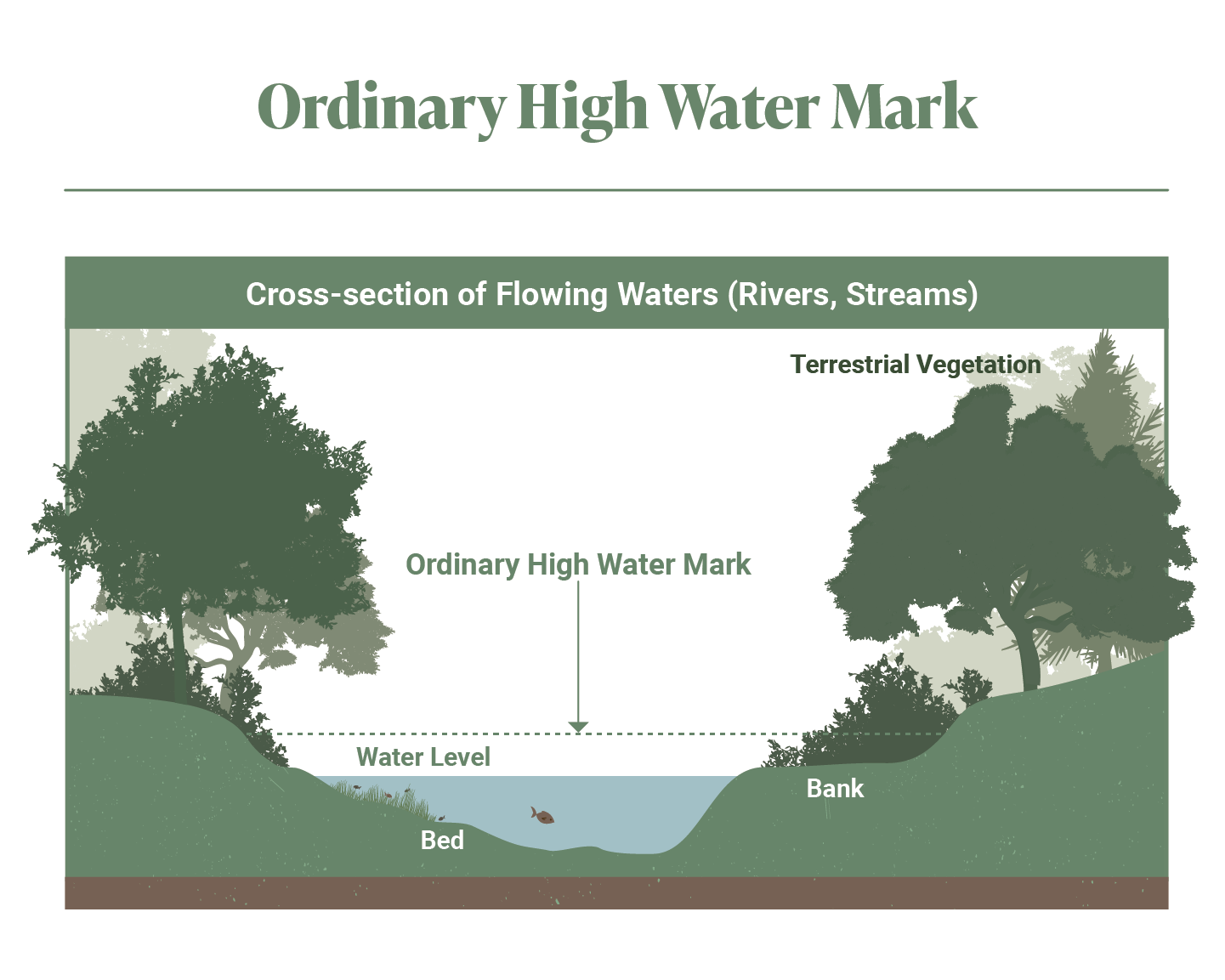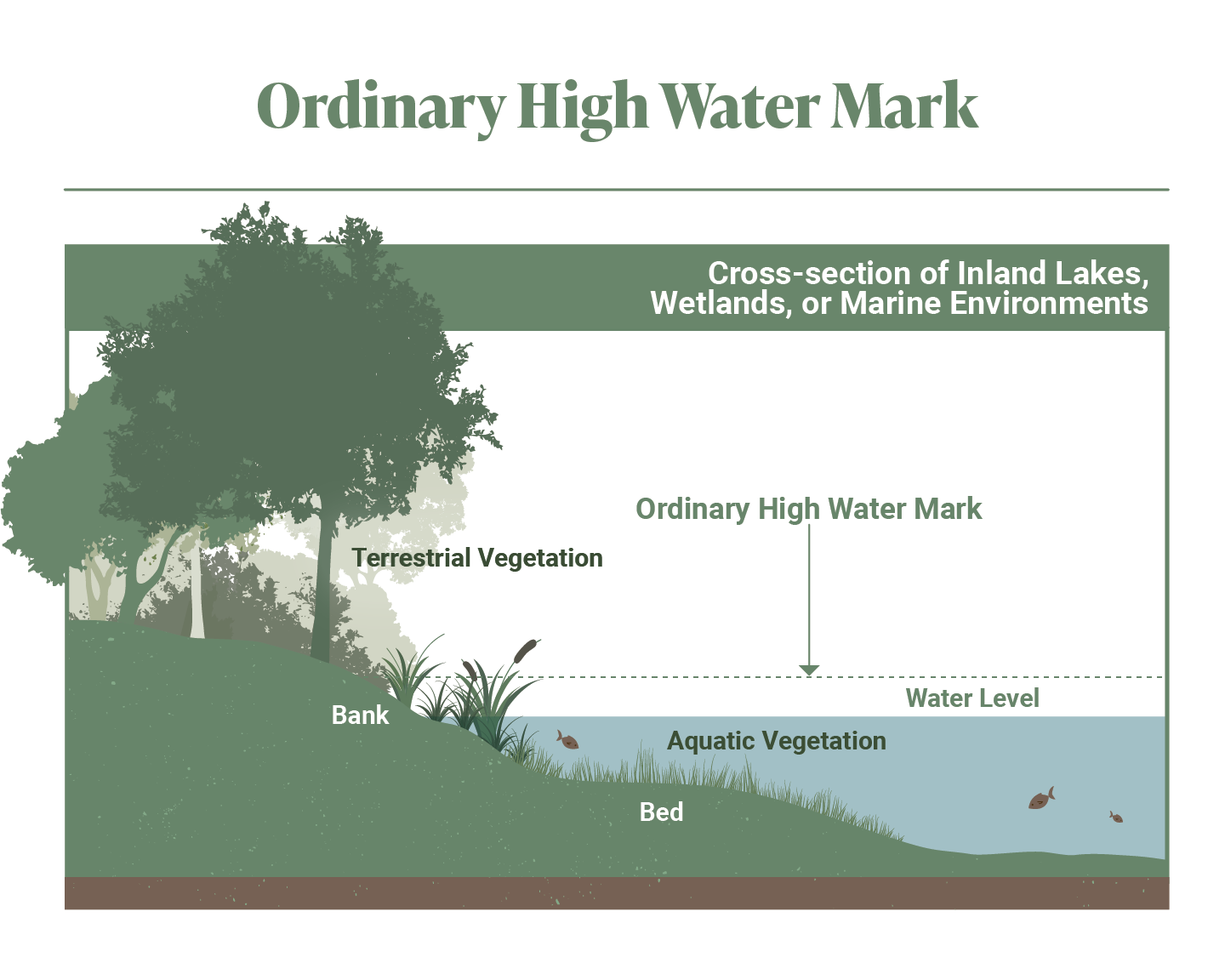Code of practice: Beaver dam breaching and removal
On this page:
1.0 About this code of practice
Important: All beaver dam breaching and removal activities (including the removal of beavers prior to breaching or removing the dam) must be undertaken in compliance with all relevant provincial and territorial acts and regulations.
This code of practice outlines Fisheries and Oceans Canada (DFO)'s national best practices for the breaching or removal of beaver dams that impound water, change water flows and have the potential to cause damage to nearby infrastructure and property. Beaver dams may occasionally need to be breached or removed to avoid flooding and protect, maintain or construct infrastructure. It is important to survey the footprint of the dam and backwater area and exercise caution during dam breaching or removal due to the possibility of downstream flooding and damage.
Be aware that the breaching or removal of a beaver dam may not necessarily prevent future beaver activity in the area. Contact your provincial wildlife management office for more information on beaver management.
You can protect fish and fish habitat (including aquatic species at risk, their critical habitat and residences) when proceeding with the breaching or removal of a beaver dam by following the measures listed below. When implemented correctly, this can mitigate risks to fish and fish habitat from beaver dam breaching or removal, which can include:
- disturbance of watercourse beds and banks
- release of sediments or other deleterious substances
- changes in flow regime
- stranding of fish
DFO is responsible for the conservation and protection of fish and fish habitat across Canada. Under the Fisheries Act, no one may carry out works, undertakings and activities that result in the harmful alteration, disruption or destruction (HADD) of fish habitat, or the death of fish, unless it has been authorized by DFO. DFO's approval under the Species at Risk Act is also required if an activity affects an aquatic species at risk, any part of its critical habitat or the residences of its individuals.
The purpose of this code of practice is to describe the conditions under which the code can be applied to your project and the measures you are required to implement in order to prevent harmful impacts to fish and fish habitat and avoid contravention of the Fisheries Act and the Species at Risk Act. If you cannot meet all of the conditions and implement all of the applicable measures listed below, your project may result in a violation of the Fisheries Act and the Species at Risk Act and you could be subject to enforcement action.
If you are uncertain about whether this code of practice is applicable to your project, it is recommended that you consult our website or a qualified environmental professional to determine if other codes of practice should also be implemented, or if further review by DFO may be necessary. For any remaining questions, please contact the Fish and Fish Habitat Protection Program office located in your area. It remains your responsibility to comply with the Fisheries Act and the Species at Risk Act.
It is your duty to notify DFO if you have caused, or are about to cause, the unauthorized death of fish by means other than fishing/harmful alteration, disruption or destruction of fish habitat. Such notifications should be directed to the Fish and Fish Habitat Protection Program office located in your area.
This code of practice does not remove nor replace the obligation to comply with the requirements of any other federal, territorial, provincial or municipal regulatory agency including guidance regarding species and habitats managed by these jurisdictions.
It is good practice to notify nearby Indigenous communities of the works, undertakings and activities.
A project review by DFO is not required when the project activities meet the description in section 1 and the conditions in section 2 and when the measures to protect fish and fish habitat set out in section 3 of this code of practice are applied. Request a project review if your project does not meet all of these requirements.
2.0 Conditions
The following conditions describe when this code of practice can be applied:
- You determine if there are aquatic species at risk within the affected area by consulting our aquatic species at risk map, and you confirm that the work is not taking place within:
- the distribution area of molluscs listed under schedule 1 of the Species at Risk Act
- the critical habitat or residences of any other aquatic species at risk
- The dam is not located at the outlet of a lake.
- The work does not include realigning the watercourse, dredging, grading, excavating or placing fill on the bed or banks of the watercourse.
- The work does not involve the use of explosives.
- You implement the measures in section 3 to protect fish and fish habitat when carrying out the works, undertakings and activities.
As a condition of this code of practice, please submit a notification form (PDF, 50 KB) to your regional DFO office 10 working days before starting work. Notification forms will inform the continuous improvement of the codes of practice over time.
To fill out a PDF form, you must:
- download it to your computer
- use PDF software to open it (such as, Adobe Reader or Foxit PDF)
For more information: How to download and open a PDF form
3.0 Measures to protect fish and fish habitat
3.1 Protection of fish
- Plan in-water works, undertakings and activities to respect fish protection timing windows.
- Limit the duration of in-water works, undertakings and activities.
3.2 Protection of the riparian zone
- Use existing trails, roads, access points or cut lines.
- Use methods to prevent soil compaction (e.g., swamp mats, pads).
- Limit vegetation removal, pruning and grubbing to the area required for accessing the site of the works, undertakings and activities.
- Construct roads, access points and approaches perpendicular to the watercourse if a new access point is required to reach the watercourse.
- Restore the banks and riparian vegetation affected by the works, undertakings and activities.
- Re-vegetate the disturbed areas with native species suitable for the site.

Side view of a riparian zone. There are three distinct zones in the diagram: the aquatic zone, riparian zone, and upland zone. In the aquatic zone there is aquatic vegetation growing on the bed of the water body that is either fully submerged under water, or partially emerging, from the current water level. The riparian zone includes vegetation such as sedges and rushes, and shrubs and trees. The upland zone, furthest from the water's edge, includes vegetation such as: trees (evergreens), shrubs, and grasses.
3.3 Protection of aquatic habitat
- Operate vehicles and machinery in a manner that minimizes disturbance to the watercourse bed and banks.
- Follow code of practice for Temporary Fords if fording is required.
3.4 Protection of fish and fish habitat from sediment
- Operate machinery on land in stable dry areas.
- Install erosion and sediment control measures prior to beginning the works, undertakings and activities.
- Develop and implement an erosion and sediment control plan to prevent the introduction of sediment into any water body during all phases of the works, undertakings and activities.
- Inspect the erosion and sediment control measures and structures regularly during all phases of the works, undertakings and activities.
- Maintain the erosion and sediment control measures and structures during all phases of the works, undertakings and activities.
- Monitor the watercourse regularly for signs of sedimentation during all phases of the works, undertakings and activities and take corrective action if required.
- Use biodegradable erosion and sediment control materials whenever possible.
- Keep the erosion and sediment control measures in place until all disturbed ground has been stabilized.
- Remove all sediment control materials (unless biodegradable) once site has been stabilized.
- Dispose of, and stabilize, all material on land in a designated area away from the ordinary high water mark of any water body.
- When dewatering beaver impoundments:
- remove the dam gradually, beginning with a small breach, and work in stages to control flows and prevent sediment from being released downstream, and prevent fish stranding
- ensure the width of the breach opening of the beaver dam does not exceed the width of the original stream channel
- as the water levels drop in the upstream pond, increase the size of the opening to drain the pond to the desired water level
3.5 Protection of fish and fish habitat from other deleterious substances
3.5.1 Develop a prevention plan
- Do not allow the deposit of deleterious substances in any water body.
- Develop a plan to prevent deleterious substances from entering a water body.
- Maintain all machinery on site in a clean condition and free of fluid leaks.
- Wash, refuel and service machinery in such a way as to prevent any deleterious substances from entering a water body.
- Store fuel and other materials for the machinery in such a way as to prevent any deleterious substances from entering a water body.
- Dispose of all waste materials on land in a designated area away from the ordinary high water mark of any water body.
3.5.2 Implement a response plan
- Implement a response plan immediately in the event of a spill of a deleterious substance (including sediment).
- Stop all works, undertakings and activities.
- Report spill immediately when a deleterious substance enters a water body.
- Contain water with deleterious substances.
- Clean-up and dispose of water contaminated with deleterious substances.
- Use an emergency spill kit.
4.0 Glossary
Affected area: The area within which all of the proposed project impacts are likely to occur either directly (i.e., project footprint) or indirectly (i.e., downstream or other surrounding areas).
Aquatic species at risk: Any aquatic species listed under schedule 1 of the Species at Risk Act as endangered, threatened, or extirpated.
Deleterious substance: Any substance that, if added to water, would degrade, alter, or form part of a process of degradation/alteration to the quality of that water so that it is possibly rendered deleterious to fish, fish habitat, or to the human use of fish that frequent that water. For example: fuel, lubricants, paint, primers, rust, solvents, degreasers, antifreeze, uncured concrete, creosote, chlorinated water, herbicides, etc.
Harmful alteration, disruption or destruction (HADD): Any temporary or permanent change to fish habitat that directly or indirectly impairs the habitat's capacity to support one or more life processes of fish.
Ordinary high water mark: The usual or average level to which a body of water rises at its highest point and remains for sufficient time to change the characteristics of the land. In flowing waters (e.g., rivers, streams) this refers to the "active channel/bank-full level" which is often the 1:2 year flood flow return level. In inland lakes, wetlands or marine environments it refers to those parts of the water body, bed and banks that are frequently flooded by water so as to leave a mark on the land and where the natural vegetation changes from predominately aquatic vegetation to terrestrial vegetation (excepting water tolerant species). For reservoirs this refers to normal high operating levels (i.e., full supply level).

This is a cross section of flowing waters, for both rivers and streams, with banks on both sides of the water body. Terrestrial vegetation is drawn in the form of trees, shrubs, and grasses and are located on land above the ordinary high water mark.

This is a cross section of the area where water meets land for a lake, wetland, or marine environment. Aquatic vegetation can be found growing on the bed of the water body and are either fully submerged, or partially emerging, from the current water level. Trees, shrubs, and plants are shown at and above the ordinary high water mark of the shoreline which is depicted by a dotted line slightly above where the water meets land.
Riparian vegetation: Occurs adjacent to the water body and directly contributes to fish habitat by providing shade, cover and areas for spawning and food production.
Riparian zone: Area located between a water body's ordinary high water mark and upland area.
Qualified Environmental Professional (QEP): A person who is experienced in identifying and assessing potential impacts to fish and fish habitat generated from various works, undertakings or activities conducted in or near water, and implementing management measures to avoid and mitigate them. QEPs possess a post-secondary degree or diploma in biological, geophysical or environmental sciences and are often referred to as:
- aquatic biologist
- fisheries biologist
- fluvial geomorphologist
- applied scientist
- fisheries technician
- environmental consultant or
- natural resource consultant
- Date modified: